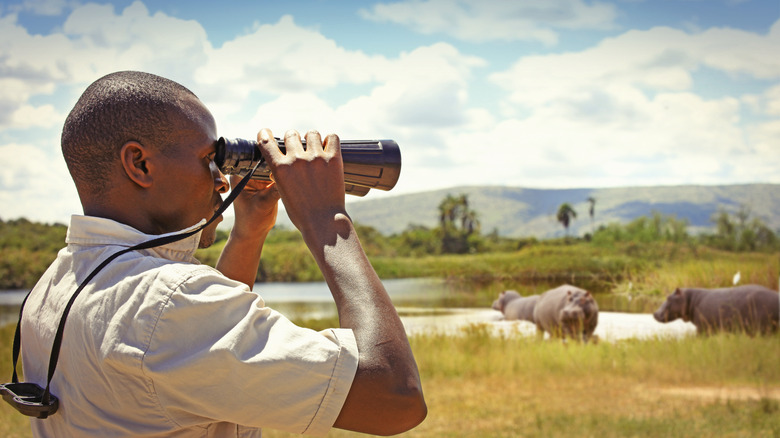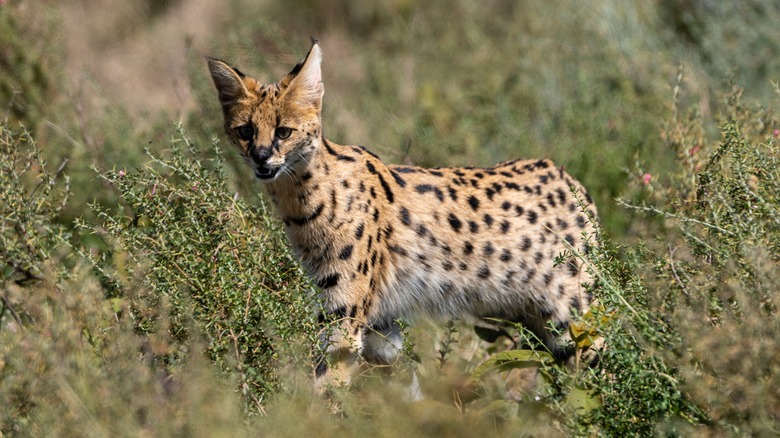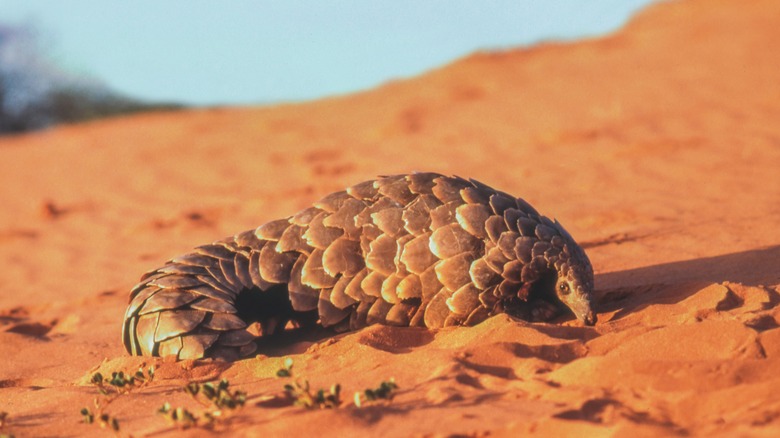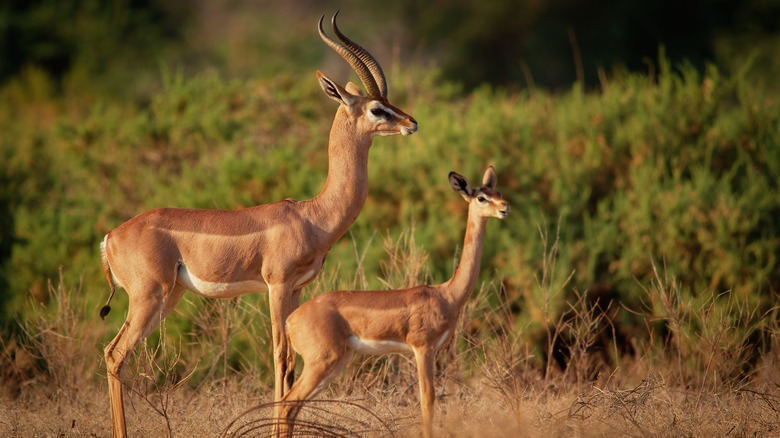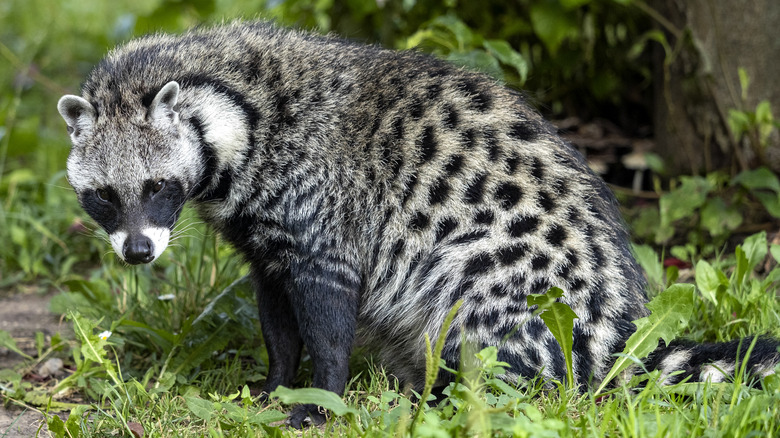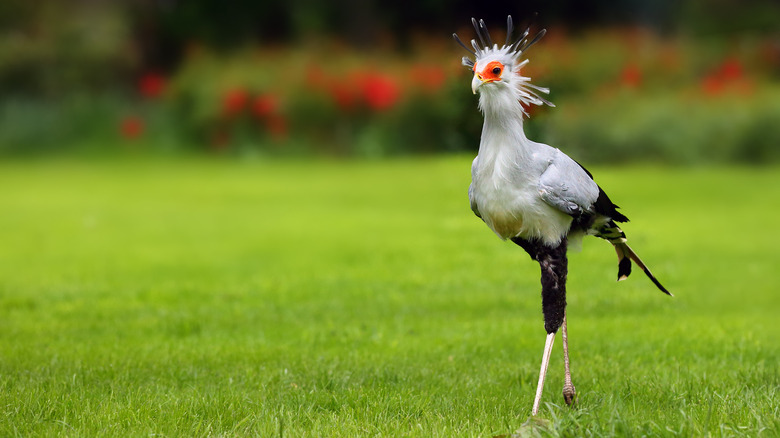5 Unusual Animals You May See While On An African Safari
For those who revel in the great outdoors, every expedition holds the promise of unveiling new marvels of the natural world. Among these wonders is the diverse mosaic of animal life that thrives in the heart of the untamed wilderness. From deadly creatures lurking in the trees of the Amazon Rainforest to the beautiful highlanders of the Andes Mountains, there are thrills to be spotted in all four corners of the world. Yet, perhaps nowhere is the opportunity to witness this diversity more pronounced than on the plains of Africa.
When most of us envision an African safari, we yearn for the chance to observe The Big Five — lion, leopard, rhinoceros, elephant, and African buffalo. However, a myriad of lesser-known species are equally captivating and offer their own unique allure.
As you embark on your African safari, prepare to be captivated by the sight of creatures both strange and beautiful. The vast landscapes of this continent provide the perfect conditions for all sorts of unique wildlife to thrive — wildlife that you can't see anywhere else in the world. From the depths of the delta to the sun-drenched savannah, these are five unusual animals you may see while on an African safari.
Serval
The African serval (Leptailurus serval) is a feline inhabitant native to the savannahs and grasslands of Africa, primarily south of the Sahara Desert. It is considered a medium-sized cat, with adults weighing between 20 and 40 pounds and standing anywhere between 32 and 40 inches tall. Most serval cats don yellow-brownish fur adorned with striking blacks stripes on their heads. These stripes often break into spots further down on the serval's bodies, adding a layer of depth to the serval's appearance. Interestingly, in the mountains of Kenya, servals sport an all-black coat. But the best place to see this feline is in the Serengeti.
Though it is not as imposing as its larger feline relatives like the lion or tiger, the serval cuts an impressive figure as it gracefully navigates its habitat in search of prey. With its exceptionally long legs and finely-tuned ears, the serval has a remarkable ability to pounce on prey with astonishing speed and precision. If you remember to bring your binoculars, you may even be lucky enough to witness the serval's sensitive hearing capability in action while on safari. The serval is able to rotate its large ears 180 degrees independently of each other in order to tune into the faintest of sounds. It is this keen hearing that enables it to pinpoint the location of potential prey. Combined with its explosive jumps powered by its disproportionately long legs, the serval is able to launch lightning-fast attacks on unsuspecting prey.
Pangolin
The pangolin, sometimes referred to as the "scaly anteater" is a remarkable creature that roams the forests and grasslands of Africa. It's earned this nickname due to its unique armor-like scales and distinctive long tongue, akin to that of an anteater's. Its striking body makes the pangolin one of the most intriguing mammals in the animal kingdom.
There are eight species of pangolins, with four found in Africa and the other four in Asia. These nocturnal creatures spend their nights foraging for ants and termites, using their powerful claws to dig into anthills and termite mounds with surprising precision. Once inside, the pangolin's long, sticky tongue – which can extend up to 16 inches – snatches up its food in an incredibly swift motion, making pangolins a formidable predator.
What truly sets the pangolin apart, however, is its unique defense mechanism. When threatened, the pangolin curls into a tight ball, so that predators are faced with an impenetrable ball of overlapping scales. This natural armor is highly effective against most predators, but sadly, it offers little protection against the greatest threat facing pangolins today: humans. Driven by demand for the scales and meat, pangolins have become the most trafficked mammals in the world. Despite these challenges, there is hope for the pangolin's survival. Conservation efforts are helping to raise awareness about the plight of pangolins. As we strive to protect these extraordinary creatures, it's essential to safeguard and respect their space if encountering them on a safari.
Gerenuk
The gerenuk is an animal belonging to the antelope species found in the arid bushlands and scrub forests of East Africa, where it is most often seen in safaris around Kenya. It sports a slender body and tall legs, rendering it capable of reaching speeds of up to 40 miles per hour. It also dons a long neck, which allows it to reach heights that other herbivores cannot reach, making it a master of foraging on high branches and foliage. These traits have earned it the nickname "giraffe gazelle" in English.
The gerenuk possesses a keen sense of sight, smell, and hearing, which, in tandem with its streamlined body, serve as vital tools for detecting praetors like lions, leopards, and cheetahs. As such, the gerenuk is uniquely adapted to evade danger and survive in its harsh and unforgiving habitat. Unfortunately, these evolutionary adaptations have not protected the gerenuk from threats like habitat loss and poaching.
As we strive to conserve gerenuk's native habitats and raise awareness of the negative impacts of poaching on ecosystems, we recognize the importance of preserving the biodiversity of the African plains. By supporting these initiatives and fostering a deeper understanding of the ecological roles these unique creatures play, we can help ensure the gerenuk thrives in the wild.
African civet
The African civet is reminiscent of the North American raccoon, its fur lined with irregular black, gray and/or white markings. Civets are primarily solitary creatures, so marking their territory is an important adaptive behavior for this species. They accomplish this via odor and scent glands that are situation on various parts of their bodies, including and around their tail and feet. These glands emit strong odors that are distinct to each civet, creating a potent olfactory signature than cab ne detected by other civets in the vicinity. This cautions other civets from encroaching, or, during the mating season, has the opposite effect and invites potential mates in.
One of the most intriguing feature of the African civet is its diet, which is extremely varied. The civet eats fruits, insects, small rodents, and even carrion. This diverse palette makes the civet an important regulator within its ecosystem, since it controls pests and is able to disperse seeds.
While civets are generally elusive, they have been reported to be seen at safaris in Uganda, Kruger National Park in South Africa, or in Zambia.
Secretary bird
The secretary bird is a distinctive and fascinating bird native to the open grasslands and savannahs of sub-Saharan Africa. It sports a distinctive crest of feathers atop its head that look like quill pens tucked behind the ears of office secretaries, which is how it is rumored to have got its name. Regardless of its etymology, there is no denying that the secretary bird cuts a distinctive silhouette against the African sky.
The secretary bird can grow up to five feet in length, and its wings can reach a span of seven feet. This is impressive, but still nowhere near close to the wingspan of the largest and rarest bird in North America. Still, the secretary bird is tall, owning the longest legs of any bird of prey. In fact, secretary birds prefer to hunt by foot, as opposed to scanning for prey from the skies. It uses its powerful legs and sharp talons to stalk its prey amongst the grasslands of Africa. When it hones in on a potential piece of food, it disarms the prey by kicking it powerfully — martial arts style.
In addition to its unique hunting methods, the secretary bird is also known for its courtship displays, which involve aerial acrobatics and intricate dances performed by the mating pairs. These displays serve to strengthen the pair bond and reinforce territorial boundaries of their breeding ground. Your chances of seeing these dances are highest in Tanzania, South Africa, Ethiopia or the Maasai Mara in Kenya.
